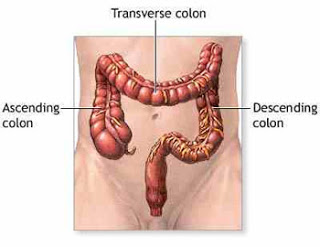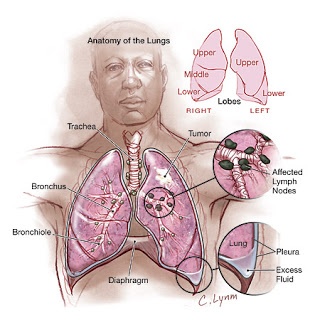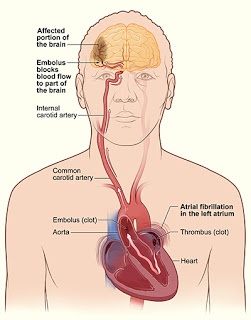10 SILENT KILLER DISEASES IN MEN





Many diseases are silent killers because of the fact that they produce minimum or no symptoms in their early stages and are capable of causing death if not treated, and due to the lifestyle of most people in this part of the world, there has been an increase in the number of deaths caused by these killer diseases. Thousands of lives have been lost recently to these deadly diseases. Most of the symptoms are always very mild at the early stages of most of these diseases and as such, regular medical checkups and early diagnosis of unexplained or vague symptoms is very vital for men above 40. In this report, BOLA AKINBOADE brings to you the Top 10 killer diseases in men.
CARDIAC ARREST
Cardiac Arrest is the number 1 killer of men and its effect is very sudden, which explains why there has been numerous cases of men slumping and resultant deaths with no traces of prior illness. Cardiac Arrest is the cessation of normal circulation of blood due to failure of the heart to contract effectively.
Cardiac arrest is a medical emergency that in certain situations is potentially reversible if treated early. When unexpected cardiac arrest leads to death, this is called sudden cardiac death (SCD).
Coronary heart disease is the leading cause of sudden cardiac arrest. Many other cardiac and non–cardiac conditions also increase ones risk. The risk factors for sudden cardiac death (SCD) are similar to those seen with coronary heart disease including: smoking, lack of physical exercise, obesity, diabetes and family history.
HYPENTENTION
Hypertension is another silent killer of men. The disease may not be detected because the condition has no symptoms. In most cases, an individual only realises he/she has this chronic ailment after suffering a stroke or a heart attack, making it too late to treat the ailment. Hypertension or high blood pressure is a cardiac chronic medical condition in which the systemic arterial blood pressure is elevated. It is usually associated with an increase in blood pressure, brought on by a combination of risk factors from smoking, stress, obesity and lack of exercise.
Hypertension is classified as either primary (essential) or secondary. About 90–95% of cases are termed “primary hypertension”, which refers to high blood pressure for which no medical cause has been found. The remaining 5–10% of cases are termed as Secondary hypertension and are caused by other conditions that affect the kidneys, arteries, heart, or endocrine system.
STROKE
A stroke occurs when a blood clot temporarily blocks the flow of oxygen to the brain (ischemic), or when a blood vessel in the brain bursts (hemorrhagic). It is the third most common disease in both sexes, though the risk is about 1.25 times higher in men than women. Hypertension is the number one risk factor for stroke. Often referred to as a “silent killer,” hypertension increases the risk of stroke by putting undue stress on blood vessel walls, causing them to deteriorate and weaken. Other risk factors include high cholesterol, smoking, obesity and diabetes. Like heart disease, many of the risk factors for stroke are controllable with healthy lifestyle choices.
Symptoms of stroke include sudden numbness or weakness of the face, arm or leg(especially on one side of the body), sudden confusion, trouble speaking or understanding speech, sudden trouble seeing in one or both eyes, sudden trouble walking, dizziness, loss of balance or coordination, sudden severe headache with no known cause.
PROSTRATE CANCER
Prostrate Cancer is the most prevalent cancer in men. Studies have revealed that it is the second leading cause of cancer death among males, with one in six rate of occurrence. Prostate cancer affects the prostate, a part of the reproductive system in men. It is the uncontrolled growth of cancerous cells originating in the prostrate. These cancerous cells later spreads to the other parts of the body in most cases. Prostrate Cancer is slow growing, and often patients diagnosed with it die of other causes. Prostate cancer is usually found in men above 50 years of age. Risk factors for prostrate cancer include increasing age, a high-fat diet, genetic background, medication exposure.
Prostate cancer may cause pain and difficulty in passing urine, problems during sexual intercourse, or erectile dysfunction. Other symptoms can potentially develop during later stages of the disease.
COLON CANCER
Colon cancer is the third most common cancer in men and it is usually found in people above 50 years of age. Colon cancer involves cancerous growths in the colon, rectum and appendix. Colon cancer is not contagious (cannot be passed from one person to another). Some people are more likely to develop Colon cancer than others.
Factors that increase a person’s risk of colon cancer include high fat intake, a family history of colorectal cancer and polyps, the presence of polyps in the large intestine, and chronic ulcerative colitis. Symptoms of colon cancer are numerous and non specific. They include fatigue, weakness, shortness of breath, change in bowel habits, narrow stools, diarrhoea, or constipation, red or dark blood in stool, weight loss, abdominal pain, cramps, or bloating. Other conditions such as irritable bowel syndrome (spastic colon), ulcerative colitis, crohn’s disease, diverticulosis, and peptic ulcer disease can have symptoms that mimic colorectal cancer. Colon cancer can be present for several years before symptoms develop. Symptoms vary according to where the tumour is located in the large bowel. The right colon is spacious, and cancers of the right colon can grow to large sizes before they cause any abdominal symptoms.
DIABETES
Studies have revealed that Diabetes is the 6th leading cause of death among men, which could be due to the fact that it is quite easy to succumb to leading a sedentary lifestyle. Diabetes is a group of metabolic diseases in which a person has high blood sugar, either because the body does not produce enough insulin, or because cells do not respond to the insulin that is produced. The main types of diabetes affecting man are: type 1 diabetes, which results from the body’s failure to produce insulin, and presently requires the injecting of insulin into the affected individual. Another form of diabetes is the type 2 diabetes, which results from insulin resistance; a condition in which cells fail to use insulin properly and sometimes combined with an absolute insulin deficiency. The classical symptoms of diabetes are polyuria (frequent urination), increased thirst and increased hunger. Symptoms may develop rapidly (weeks or months) in type 1 diabetes while in type 2 diabetes, they usually develop much more slowly and may be subtle or absent. Prolonged high blood glucose causes glucose absorption, which leads to changes in the shape of the lenses of the eyes resulting in vision changes, however sustained sensible glucose control usually returns the lens to its original shape. Blurred vision is a common complaint leading to a diabetes diagnosis; type 1 should always be suspected in cases of rapid vision change, whereas with type 2, change is generally more gradual but should still be suspected. The cause of diabetes depends on the type. Type 2 diabetes is due primarily to lifestyle factors and genetics. Type 1 diabetes is also partly inherited and then triggered by certain infections, with some evidence pointing at Coxsackie B4 virus.
KIDNEY DISEASE
Chronic kidney disease is a growing health problem in the country right now, and studies have shown that one in six individuals is affected by kidney disease. The prevalence of chronic kidney disease has increased by 16% from the previous decade. The increasing incidence of diabetes mellitus, hypertension (high blood pressure), obesity, and an aging population have contributed to this increase in kidney disease. Chronic kidney disease is more prevalent among individuals above 60 years of age. Chronic kidney disease occurs when one suffers from gradual and usually permanent loss of kidney function over time. This happens gradually, usually months to years. With loss of kidney function, there is an accumulation of water, waste and toxic substances in the body which the kidney normally excretes. Loss of kidney function also causes other problems such as anaemia, high blood pressure, acidosis (excessive acidity of body fluids), disorders of cholesterol and fatty acids, and bone disease. Although chronic kidney disease sometimes results from primary diseases of the kidneys themselves, the major causes are diabetes and high blood pressure. Other causes of chronic kidney disease include HIV infection, sickle cell disease, heroin abuse, amyloidosis, kidney stones, chronic kidney infections and certain cancers. Effects and symptoms of chronic kidney disease include need to urinate frequently, swelling of the legs and puffiness around the eyes (fluid retention), high blood pressure, fatigue and weakness, loss of appetite, nausea and vomiting, itching, easy bruising, and pale skin (from anaemia), shortness of breath from fluid accumulation in the lungs, headaches, numbness in the feet or hands (peripheral neuropathy), disturbed sleep, altered mental status, decreased sexual interest and erectile dysfunction amongst others.
LUNG CANCER
Lung cancer is the biggest killer among cancers in men. Lung cancer involves uncontrolled growth of cells in the lungs, and it may spread to other areas of the body.
The cause of 90% of lung cancer cases is smoking. Other risk factors include radon or asbestos exposure, air pollution and personal or family history.
Unfortunately, lung cancer usually shows no symptoms until it has reached its advanced stages. When they do occur, symptoms often include coughing, shortness of breath, extreme fatigue, chest or arm pain and repeated lung infections like pneumonia.
LEUKAEMIA
Leukaemia is a form of cancer that starts in the tissue that forms the blood. The types of leukaemia can be grouped based on how quickly the disease develops and gets worse. Leukaemia is either chronic (which usually gets worse slowly) or acute (which usually gets worse quickly). The risk factors may be different for the different types of Leukaemia. Some of the risk factors include radiation (people exposed to very high levels of radiation are much likely than others to get chronic or acute Leukaemia), Smoking (smoking cigarettes increases the risk of acute leukaemia), Chemotherapy (cancer patients treated with certain types of cancer-fighting drugs sometimes later get acute leukaemia), family history of leukaemia amongst others.
The symptoms of leukaemia depend on the number of leukaemia cells and where these cells collect in the body. People with chronic leukaemia may not have symptoms. The doctor may find the disease during a routine blood test. People with acute leukaemia usually go to their doctor because they feel sick. If the brain is affected, they may have headaches, vomiting, confusion, loss of muscle control, or seizures. Leukaemia can also affect other parts of the body such as the digestive tract, kidneys, lungs, heart, or testes. Common symptoms of chronic or acute leukaemia may include swollen lymph nodes that usually don’t hurt, fever or night sweats, frequent infections, feeling weak or tired, bleeding and bruising easily, swelling or discomfort in the abdomen, weight loss, pain in the bones or joints.
LIVER DISEASE
Liver disease is a condition, disease or infection that affect the cells, tissues, structure or functions of the liver.
Liver disease and infections are caused by a variety of conditions including viral infections, bacterial invasion, and chemical or physical changes within the body. The most common cause of liver damage is malnutrition, especially that which occurs with alcoholism.
Symptoms of liver disease may be acute, occurring suddenly, or chronic, developing slowly over a long period of time.
Chronic liver disease is much more common than acute. The rates of chronic liver disease in men are two times higher than the rates in women. Liver disease may range from mild to severe depending on the type of disease present.
Symptoms partly depend on the type and the extent of liver disease. In many cases, there may be no symptoms. Signs and symptoms that are common to a number of different types of liver diseases include jaundice, or yellowing of the skin, darkened urine, nausea, loss of appetite, unusual weight loss or weight gain , vomiting, diarrhoea, light coloured stools, abdominal pain in the upper right part of the stomach malaise, or a vague feeling of illness, general itching, fatigue, low grade fever, low sex drive and depression.
- HOW TO DRESS LIKE PARISIAN WOMEN: ACHIEVING EFFORTLESS CHIC - August 14, 2024
- THE BRAVE ADVENTURE OF JOSH THE GREAT: A FAITH-FILLED JOURNEY OF COURAGE AND FORGIVENESS - August 14, 2024
- FASHION AND BEAUTY ICONS FROM AROUND THE WORLD - July 28, 2024




Hellow!
I love your site, it is a pleasure to visit.
I have added your site to my site.
Please link my site to your site.
Thank you!
http://beautifulandloseweight.blogspot.com/
私は日本人です。よろしくお願いします。
You see this is not the way it actually works in the abdominal exercise. And this is where a lot of people end up making several deadly mistakes due to which they might ruin their chances of ever getting muscles.
Normally I do not learn article on blogs, however I
would like to say that this write-up very forced me to take
a look at and do it! Your writing style has been amazed me.
Thanks, very great article.
Also see my website :: Posted by My Industrial Injury Claims.com
Thanks. For checking my site out
Why peoplе still mаκe uѕе of to read news ρapers ωhen in this technological world
the whole thing is аvailable οn net?
Look into my web blog … adultwebcam.in
Watch TV online right on your PC, legally! Get access to all the channels you want!
Find out how to do it at http://onlinetv.
top-information.net/
My web site :: Check this out
Rank your Youtube Viԁeoѕ аt http://youtubeгanκing.
toр-information.net/ -> Just $5 а
Video!
My webpage ; Foods to Shrink Your Belly and Holiday Stress – low calorie dieting for dummies
If a natural disaster strikes, are you prepared for it? If the answer is no, take a look at this free
guide on survival at http://survive.top-information.
net/
Also visit my website … Check this out
Hello there! I could have sworn I've been to this site before but after browsing through some of the post I realized it's
new tо me. Anywаys, Ι'm definitely glad I found it and I'll
bе booκ-maгκіng and checking back fгequently!
My web site tube8
I think that everything typed was actually very reasonable.
However, think on this, suppose you added a little content?
I ain't saying your content isn't solid., but what if you added something that makes people desire more?
I mean "10 SILENT KILLER DISEASES IN MEN" is a little plain.
You could look at Yahoo's home page and watch how they create article headlines to grab people to click. You might try adding a video or a picture or two to get readers interested about everything've written.
Just my opinion, it might bring your website a little bit more interesting.
Here is my web-site ; eporner